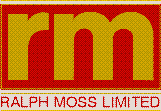 Ralph
Moss Limited
Ralph
Moss Limited
* The government's fourth budget, and likely
its last before a general election, does not deviate from the course set in
prior years. To the extent markets feared a wavering in the commitment to
fiscal discipline, this plan will be well received. More likely, the lack of
surprises in this budget will minimize its impact on capital markets.
* An unbroken record of bettering targets, a
$3billion contingency reserve, and conservative growth and interest rate
assumptions boost the credibility of the government's funding forecasts.
* Canadian Dollar: Positive
* Short-Term Interest Rates: Neutral/Positive
* Long-Term Bonds: Positive
* Common Stocks: Neutral/Positive
Charitable Donations: Added Incentive
Canadians making charitable donations receive a
federal tax credit of 17% for the first $200 donated each year, increasing to a
29% credit for amounts in excess of $200. This tax credit was limited to a
maximum annual donation of 50% of net income. Beginning with the 1997 tax year,
the maximum annual donation will be raised to75% of net income for individuals
and corporations.
Also announced in the budget is a new incentive for taxpayers wishing to gift
publicly traded securities that have appreciated in value. In the past,
taxpayers wishing to donate assets that had appreciated in value were subject
toa tax liability due to the capital gains triggered on thedisposition of the
asset to the charity. This Budget proposes to reduce this income inclusion rate
on capital gains from 75% to 37.5%, meaning that only 37.5% of the capital gain
will be taxable. This reduction will apply to donations made between February l
8, 1997 and the end of the calendar year 2001. Donations eligible for this
reduced rate will include securities listed on prescribed stock exchanges
donated by either an individual or a corporation.
RESPs: New Rules Allow Rollovers To RSPs
The Budget announced that, effective immediately,
eligible RESP contributions have been doubled to $4,000per beneficiary per
year. Also, any time after 1997, subject to certain criteria, where
beneficiaries are not able to pursue post-secondary education, contributors can
transfer the income earned within the RESP to an RSP if they haveRSP
contribution room available. The original capital portion continues to be
recoverable at no tax cost to thecontributor.
In essence, where an individual has RSP contribution room available to shelter
the entire RESP income inclusion,there will be no additional taxation. However,
it appears that, where an individual is not able to fully offset the inclusion
with a RSP contribution, the contributor may be subject to an additional 20%
tax levy in addition to including the income in his/her taxable income.
Tax Assistance To People With Disabilities
Changes announced increase the list of expenses
eligible for the medical tax credit, such as an increase in the limit for
part-time attendant care expenses to $10,000.The government has also introduced
an Opportunities Fund to help Canadians with disabilities become
self-sufficient.
RRSPs: Introduction Of A Pension Adjustment Reversal
Individuals who leave their employer prior to retirement
are frequently penalized by the receipt of pension benefits that are less than
the benefit they would ultimately have received had they remained. To address
this disadvantage, a pension adjustment reversal (PAR)was announced to
restore lost RSP contribution room. The PAR will be available when an
individual receives a termination benefit from a pension plan that is low
relative to the RSP room given up.
Students: Increased Assistance
Labour Sponsored Venture CapitalCorporations (LSVCCs)
LSVCCs can now increase the size of certain investments as well as
reduce the penalties to which some funds have been exposed because they failed
to meet the 60% minimum investment rule. The Budget has introduced measures
intended to increase further the ability of small businesses to obtain funding.
It has been proposed that for every $1 of eligible investment in a small
business ($10million or less in assets) that the investment count as $1.50
towards the LSVCCs 60% investment requirement.The Budget has also proposed that
the maximum allowable investment- currently 10% of its shareholders equity to a
maximum of $10 million be increased to $15 million.
If you have any questions about The Budget, please email us